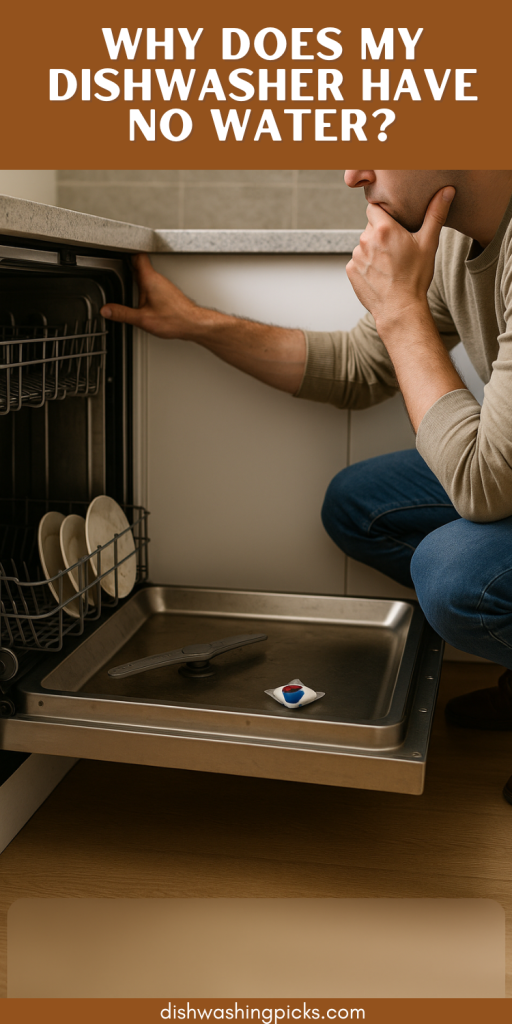
Wait… Where’s the Water?
Ever opened your dishwasher mid-cycle and thought, “Uhh, did it even start?” The dishes are bone-dry, there’s no sound of swishing water, and suddenly you’re suspiciously poking around like a detective at a crime scene.
No water in your dishwasher? That’s not just a minor hiccup—it can throw off your entire dinner clean-up rhythm. But don’t worry, you’re not alone. It’s a more common issue than you might think, and luckily, it’s one that often has a simple fix.
Let’s walk through it together—what might be going on, how to troubleshoot it, and when to call in the pros.
Is This Normal… Or a Red Flag?
Before jumping to conclusions, let’s ask the obvious: Should there even be water visible?
Surprise—most dishwashers don’t fill like a bathtub. They actually use a small amount of water, usually pooled below the filter at the base. So if you’re not seeing a puddle, it doesn’t always mean something’s broken.
But if the machine is silent, dishes are still dirty, or cycles are cutting off early, now we’re talking red flag.
Imagine this: You start a load, go relax, and come back to dishes that look like they just finished dinner. Yep—classic no-water syndrome.
Next question: What’s stopping the water?
Common Culprits Behind the No-Water Mystery
Let’s break this down with some practical suspects (no toolbox needed just yet):
1. Water Supply Valve Is Off
Sounds basic, right? But it happens—a lot. The water inlet valve (usually under the sink) might’ve been turned off during maintenance and forgotten. Give it a twist and see if that gets the party started.
2. Clogged Inlet Filter
Tiny screen. Big problem. Mineral buildup or debris in the water inlet filter can stop water from even entering. If you’re handy with a screwdriver, a quick clean might solve the issue.
3. Faulty Float Switch
The float switch tells your dishwasher when to stop filling. If it’s stuck in the “full” position—say, due to food gunk or a wayward spoon—it might prevent any water from coming in at all.
4. Door Not Fully Latching
It may seem closed, but if the latch isn’t engaged, the dishwasher won’t run. And without a cycle, there’s no water. So give that door a firm push and listen for the click.
Think of this section like your troubleshooting checklist—quick wins before calling in backup.
Let’s Get Hands-On – What You Can Check Right Now
Alright, if you’re comfortable rolling up your sleeves, here are a few quick steps you can do right now:
- Step 1: Check your sink’s water supply valve. Make sure it’s fully open.
- Step 2: Start a cycle and listen. Hear a humming sound but no filling? Likely a blocked valve or faulty inlet.
- Step 3: Open the door mid-cycle (carefully!)—is the base dry? If yes, move to checking the float or inlet filter.
- Step 4: Inspect the float—can you gently lift and drop it? If it’s jammed or not moving freely, that could be the culprit.
- Step 5: Take a peek at the dishwasher hose (if you can access the back)—kinks or blockages can prevent water flow.
Feeling a bit like a dishwasher doctor now? Good. You’re diagnosing like a pro.
When to Call the Pros (And What to Tell Them)
If you’ve tried the basics and your dishwasher’s still acting like a desert, it might be time to bring in a technician. But hey—you’ve already done the homework. That means faster service and potentially lower repair costs.
Pro tip: When calling a technician, tell them:
- If the dishwasher starts but doesn’t fill
- If it hums or is completely silent
- If you’ve already checked the water valve and float
This way, they can come prepared and get things fixed faster.
It’s Not Always a Disaster
Let’s be honest—finding no water in your dishwasher isn’t the best way to end the day. But more often than not, it’s a minor issue you can fix without breaking a sweat.
Just remember:
- No visible water ≠ broken
- Check the basics: valve, float, latch
- Still stuck? Get help with confidence
And next time you hit start, you’ll know what’s supposed to happen—and what’s not.
Got a dishwasher story that had you scratching your head? Drop it in the comments—we’ve all been there.
